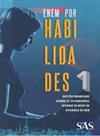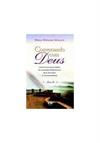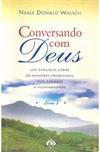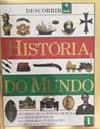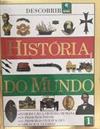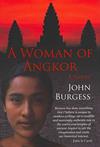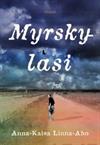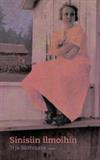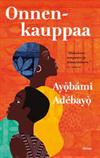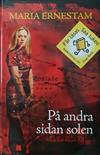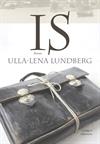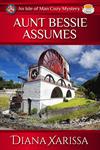
The Invention of Murder: How the Victorians Revelled in Death and Detection and Created Modern Crime
3 journalers for this copy...
"Murder in the 19th century was rare. But murder as sensation and entertainment became ubiquitous – transformed into novels, into broadsides and ballads, into theatre and melodrama and opera – even into puppet shows and performing dog-acts.
"In this meticulously researched and compelling book, Judith Flanders – author of ‘The Victorian House’ – retells the gruesome stories of many different types of murder – both famous and obscure. From the crimes (and myths) of Sweeney Todd and Jack the Ripper, to the tragedies of the murdered Marr family in London’s East End, Burke and Hare and their bodysnatching business in Edinburgh, and Greenacre who transported his dismembered fiancée around town by omnibus.
"With an irresistible cast of swindlers, forgers, and poisoners, the mad, the bad and the dangerous to know, ‘The Invention of Murder’ is both a gripping tale of crime and punishment, and history at its most readable."
I loved it! As someone with a soft-spot for murder mysteries, this is was a great examination of how the British appetite for murder in drama and literature began and developed.
"In this meticulously researched and compelling book, Judith Flanders – author of ‘The Victorian House’ – retells the gruesome stories of many different types of murder – both famous and obscure. From the crimes (and myths) of Sweeney Todd and Jack the Ripper, to the tragedies of the murdered Marr family in London’s East End, Burke and Hare and their bodysnatching business in Edinburgh, and Greenacre who transported his dismembered fiancée around town by omnibus.
"With an irresistible cast of swindlers, forgers, and poisoners, the mad, the bad and the dangerous to know, ‘The Invention of Murder’ is both a gripping tale of crime and punishment, and history at its most readable."
I loved it! As someone with a soft-spot for murder mysteries, this is was a great examination of how the British appetite for murder in drama and literature began and developed.
Journal Entry 2 by Chuggypig at Monthly BookCrossing Meet Up in York in York, North Yorkshire United Kingdom on Monday, April 21, 2014
Released 10 yrs ago (4/21/2014 UTC) at Monthly BookCrossing Meet Up in York in York, North Yorkshire United Kingdom
WILD RELEASE NOTES:
To be released at the Bank Holiday York Bookcrossing meetup.
Picked up at the York BookCrossing meetup
Mixed feelings. I do love reading social history like this and getting an insight into the way our ancestors thought (and there is certainly plenty to go on here). But I found this a little repetitive and lacking in proper analysis. It generally follows the pattern of: describing the known facts of the crime; talking about the arrest, trial, and outcome; tracing the public/press interest in the case both at the time of the trial and subsequently; and then the rash of plays, books, and penny-bloods which followed over the decades. It is fascinating but I'm not sure that so many examples needed to be given - perhaps two or three would have sufficed and then just a mention that there were many such cases.
I would have liked a bit more analysis about WHY murder was such a popular subject, and how public perceptions of it changed over time. There is a bit of this in the last couple of chapters but not really enough, and it would have been interesting to have examined modern-day crime thrillers (books, TV, film) and looked at how the conventions of the genre could be traced back to Victorian cases.
Still - engagingly and wittily written and a perfectly good catalogue of the history of detection, with the beginnings of forensic science just starting to appear in later chapters.
I would have liked a bit more analysis about WHY murder was such a popular subject, and how public perceptions of it changed over time. There is a bit of this in the last couple of chapters but not really enough, and it would have been interesting to have examined modern-day crime thrillers (books, TV, film) and looked at how the conventions of the genre could be traced back to Victorian cases.
Still - engagingly and wittily written and a perfectly good catalogue of the history of detection, with the beginnings of forensic science just starting to appear in later chapters.
Journal Entry 5 by LouiseB79 at Brigantes Bar & Brasserie OBCZ / Meetup Venue in York, North Yorkshire United Kingdom on Saturday, May 24, 2014
Released 9 yrs ago (5/27/2014 UTC) at Brigantes Bar & Brasserie OBCZ / Meetup Venue in York, North Yorkshire United Kingdom
WILD RELEASE NOTES:
Released at York BookCrossing meetup
This book illustrates, though detailed examination of a number of trials, how many of our modern attitudes were not shared by the Victorian era. It's not just the death penalty, or the lack of forensics, or attitudes towards gender, nationality and class that distance the era: some murders were seen as worse than others, for reasons that seem strange to a modern reader, and the concept of guilt and confession in a religious society influenced trial processes in peculiar ways. Through the period the rise of a professional detective force and an increasing use of scientific evidence helped bring criminals to justice. The structure of the book could be better: it was not until half way through that I could understand the author's thesis and purpose. Still, entertaining, memorable and full of broad social themes and quirky anecdotes.
